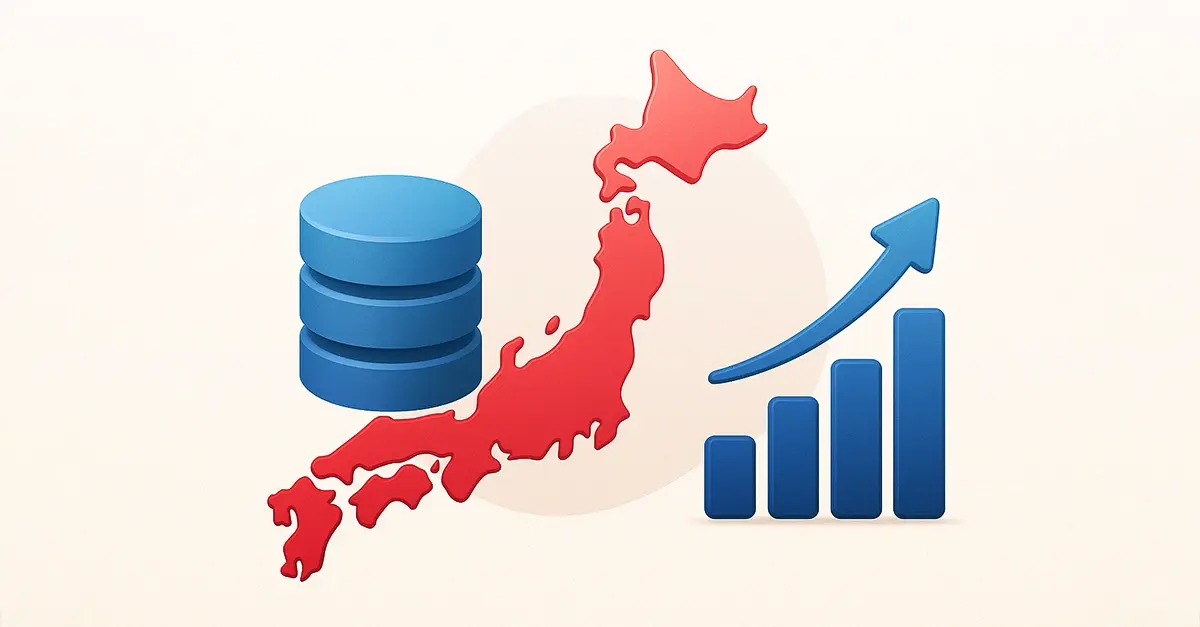UBO Structure: Mapping Ownership and Control
In an interconnected global economy, corporate ownership structures have grown increasingly complex. According to the United Nations Office on Drugs and Crime, between 2 and 5 percent of global GDP is laundered each year, which equals $800 billion to $2 trillion in illicit funds flowing through hidden networks. The World Bank has reported that nearly 70 percent of major corruption cases over the last two decades involved the use of anonymous shell companies to conceal ownership. At the center of this challenge lies the concept of the UBO databases, a web of companies, trusts, and contractual arrangements that ultimately connect to an ultimate beneficial owner.
Identifying who the UBO is provides a starting point, but understanding the structure is what separates surface-level compliance from real insight. A UBO structure shows not just who benefits, but how they are connected, what entities obscure them, and what mechanisms they use to retain control. Without this clarity, businesses risk onboarding high-risk clients, falling out of compliance with anti-money laundering (AML) directives, or facing reputational harm when hidden ownership ties are exposed.
This article explores the building blocks of UBO structures, the ways control is exercised beyond simple shareholding, and the methods organizations can use to map and validate these networks. By the end, you’ll understand why structure matters as much as ownership itself and how organizations can build processes that go beyond a box-checking exercise.
Layers of Ownership
At its most basic, a UBO structure is a set of layers. Each layer represents a legal entity that stands between the ultimate owner and the operating company. These layers are not inherently illegal. Multinational corporations often use holding companies for tax efficiency, liability management, or regulatory purposes. However, they are also frequently used to obscure who really controls an organization.
Common Layering Techniques
|
Structure Type |
Description |
Example |
|
Horizontal |
Several entities spread across different jurisdictions, each controlled by the same person. |
Person X owns five different suppliers registered in separate countries. |
|
Vertical |
A chain of holding companies stacked across multiple jurisdictions. |
A French company owned by a Luxembourg holding company, which is owned by a Cayman entity. |
|
Circular |
Companies owning shares in one another to create loops. |
Company A owns part of Company B, which owns Company C, which in turn owns a portion of Company A. |
These layering methods make it difficult to identify where legal ownership ends and true beneficial ownership begins. For example, vertical chains can involve five or more intermediaries across different registries, each requiring manual or automated investigation. Circular structures, though less common, can create an illusion of shared control and confuse investigators trying to trace ultimate ownership.
To manage this complexity, organizations must treat ownership tracing as a process of elimination. By systematically peeling back each layer - identifying who owns the shareholder, and then who owns that shareholder - compliance teams can move from what is visible on paper to the person who ultimately exerts control.
Control Mechanisms Beyond Ownership
Ownership is only one dimension of influence in a UBO structure. While many jurisdictions use thresholds such as 25% shareholding to define a UBO, real-world control often extends beyond percentages. Legal rights, governance powers, and financial leverage can make someone the de facto controller even if their equity stake is small.
Examples include:
- Board appointment rights: An investor who can nominate directors holds outsized influence even with a minority stake.
- Veto powers: Certain shareholders may have contractual authority to block decisions like mergers, acquisitions, or financing.
- Golden shares: A single share with disproportionate voting power, often created by governments or strategic investors.
- Debt leverage: Lenders may impose covenants that effectively give them control over operations if conditions are breached.
For compliance teams, this means UBO structures cannot be evaluated through ownership alone. Consider a scenario where an investor holds only 15% of equity in a company but has a shareholder agreement granting the right to appoint three of five board members. While technically a minority shareholder, their influence qualifies them as a UBO under most regulatory definitions of “control.”
Mapping control mechanisms alongside equity is essential to avoid blind spots. Without this dimension, risk assessments fail to capture the individuals who truly direct company decisions.
Trusts, Nominees, and Fiduciary Arrangements
UBO structures frequently rely on legal instruments that separate legal ownership from beneficial interest. Trusts and nominee arrangements are among the most common tools used to obscure who ultimately benefits from an entity.
- Trusts: A trust separates the settlor (the person who establishes it) from the trustee (who manages it) and the beneficiaries (who ultimately benefit). While a trustee may appear as the shareholder, regulators increasingly focus on identifying the beneficiaries as the true UBOs.
- Nominee shareholders: In some jurisdictions, laws allow one individual to appear on registry filings as a placeholder for the true investor. This can be used legitimately (for privacy or administrative convenience) but is also a well-known method of concealing control.
- Fiduciary agents: These arrangements allow a third party to exercise rights — such as voting shares — on behalf of the real owner.
Each of these structures complicates UBO identification. For example, a Cayman Islands trust may own shares in a European holding company, which in turn owns an operating company in the United States. Unless investigators look through the trust arrangement to identify the beneficiaries, the UBO structure remains incomplete.
Understanding these arrangements is critical because they often signal higher risk. Regulators view trusts and nominees with suspicion precisely because they can be abused to hide illicit activity. Mapping them correctly not only satisfies compliance but also protects organizations from unknowingly engaging with high-risk counterparties.
Jurisdictional Complexity
UBO structures are not uniform across borders. Each jurisdiction has its own definition of beneficial ownership, disclosure requirements, and enforcement practices. Multinational organizations must navigate this complexity to create a complete ownership picture.
- European Union: The EU’s Anti-Money Laundering Directives (AMLDs) require member states to maintain beneficial ownership registries. The threshold is typically 25% ownership or control. However, accessibility varies: some registries are public, while others require specific authorization.
- United Kingdom: The UK’s Persons with Significant Control (PSC) register identifies individuals who hold more than 25% of shares, voting rights, or significant influence.
- United States: The Corporate Transparency Act (CTA), effective 2024, requires reporting UBOs to FinCEN. Penalties for non-compliance include fines and even criminal liability.
- Secrecy jurisdictions: Some offshore territories permit nominee shareholders and do not require beneficial ownership disclosure. These are frequently used to obscure control and pose heightened risk.
The problem for organizations is inconsistency. A company registered in Germany may disclose UBO information at 25%, while a related entity in Singapore may use a 10% threshold. Another in the Cayman Islands may reveal nothing publicly at all.
Mapping a UBO structure therefore requires harmonizing information from multiple sources and applying a consistent standard of analysis. Without this effort, organizations risk relying on incomplete or conflicting data.
Methods to Map and Validate UBO Structures
Mapping UBO structures effectively requires both process and technology. Manual review of corporate filings is not enough; organizations must combine multiple methods to trace ownership.
Step-by-Step Approach
- Registry searches: Begin with corporate registries in each jurisdiction. These provide the legal shareholders and initial data points.
- Cross-border matching: Link entities across countries using identifiers such as registration numbers, addresses, or directors.
- Graph analysis: Use visualization tools to map relationships, identify loops, and detect hidden linkages.
- Beneficial ownership databases: Supplement local records with global datasets that consolidate registry data.
- Validation and screening: Once UBOs are identified, screen them against sanctions, politically exposed person (PEP) lists, and adverse media.
An essential part of this process is maintaining lineage metadata - records showing the source of each ownership attribute. Regulators increasingly demand that organizations not only identify UBOs but also prove how they reached those conclusions.
For example, during an audit, a bank may be asked to demonstrate how it determined that Person Y is the UBO of a client. If the bank can show that this conclusion was derived from registry documents, cross-border matching, and verified databases, regulators are more likely to accept the result.
Why Mapping Structure Adds Value
Identifying the UBO is necessary for compliance, but mapping the full structure provides strategic advantages beyond regulatory obligations.
- Audit readiness: Regulators are less concerned with the answer alone than with the process behind it. A documented structure map shows the investigative trail.
- Risk scoring: Structures reveal hidden vulnerabilities, such as a single UBO behind multiple vendors, which could pose fraud or conflict-of-interest risks.
- Fraud detection: Mapping uncovers cases where layered entities with common UBOs are used to bid against each other in procurement processes.
- Operational efficiency: Automated structure mapping reduces false positives and accelerates onboarding by presenting clear ownership chains.
Organizations that invest in structural mapping also build resilience. By understanding patterns of control, they can anticipate risks, identify emerging red flags, and build a culture of transparency. In a business environment where regulators, partners, and customers demand greater accountability, mapping UBO structures is as much a strategic differentiator as a compliance obligation.
Practical Example: Tracing a Multi-Layered UBO Structure
Consider the following scenario:
- Company A (France) is owned by Company B (Luxembourg).
- Company B is wholly owned by Company C (Cayman Islands).
- Company C is held in trust for Person D (Switzerland).
At first glance, registry filings in France would show Company B as the shareholder. A superficial investigation might stop there, identifying Company B as the owner. However, deeper analysis reveals that Company B itself is owned by a Cayman entity - and Cayman filings disclose that this entity is a trust. By reviewing the trust deed, investigators find that Person D is the ultimate beneficiary.
This example illustrates why UBO structures require persistence. Each layer adds opacity, but only by working through all of them can compliance teams identify the true UBO. Organizations that fail to go beyond the first shareholder risk onboarding clients with undisclosed exposure to high-risk individuals.
Challenges in Mapping UBO Structures
Even with strong processes, challenges remain.
- Cross-border legal differences: Thresholds, definitions, and registry accessibility vary widely.
- Frequent restructuring: Mergers, share transfers, and reorganizations alter structures quickly.
- Opaque jurisdictions: Offshore secrecy laws limit visibility.
- Conflicting sources: Different registries may provide inconsistent or outdated ownership data.
- Resource intensity: Manual reviews are slow and expensive without automation.
To overcome these barriers, organizations must balance technology with expertise. Automated tools accelerate mapping, but human review is essential for interpreting ambiguous arrangements, especially when trusts or fiduciaries are involved.
Conclusion
A UBO structure is more than a single name - it is the architecture of ownership and control that defines who truly benefits from a legal entity. Understanding these structures requires peeling back layers of companies, trusts, and fiduciary arrangements, while accounting for jurisdictional differences and control mechanisms beyond equity.
Organizations that invest in structure mapping go beyond compliance. They build audit-ready processes, uncover hidden risks, and create transparency that strengthens trust in their business relationships.
Contact us to see how registry-sourced UBO data and audit-ready lineage can help you map even the most complex UBO structures.






Comments